DROPS Safran
Egyptian combed cotton in every colour!
from:
1.15£
1.29€
Content: 100% Cotton
Yarn Group:
A (23 - 26 stitches)
/ 5 ply / sport
Weight/length: 50 g = approx 160 m
Recommended needle size: 3 mm
Knitting tension: 10 x 10 cm = 24 sts x 32 rows
Care: Machine wash on gentle cycle 40°C / Dry Flat
Made in: EU
Raw material origin: Cotton from Egypt
This yarn has an Oeko-Tex® certification (certificate number 09.HBG.68250), Standard 100, Class I from the Hohenstein Institute. This means that is has been tested for harmful substances and is considered safe in human-ecological terms. Class I is the highest level, and it means the yarn is suitable for baby articles (ages 0-3).
DROPS Safran is spun from combed, long, Egyptian cotton fibers that are twisted together in pairs, before being twisted together again. This method results in extra durable garments with great surface properties!
DROPS Safran has been on the market for many years and it's a very popular choice because of its shine, softness and many beautiful colors. The yarn can be used in projects for all ages, specially summer wear, baby clothes and accessories. Have you tried it yet?
Read more about our products' sustainability here
Please be aware that the colours shown may vary from screen to screen in the same way that shades may vary slightly from dye lot to dye lot.
How do I care for this yarn?

Machine wash on gentle cycle 40°C / Dry Flat
Here are some guidelines to wash your cotton garment, but please note that cotton has the tendency to shrink in the wash, so make sure you measure the garment before washing, in order to shape it correctly after the wash:
- Machine wash - separately - using a gentle cycle program at 40ºC and wool detergent without enzymes or optical brighteners.
- NEVER leave the garment to soak/wet in the washing machine for a long period of time.
- To dry the garment, shape it and lay it flat - do not hang - ideally on a warm bathroom floor or on top of a drying rack in a room with good air circulation. Never dry the garment in direct sunlight.
- Don’t tumble dry.
- Unevenness in the garment will even out after washing or steam ironing lightly.
- Never iron the garment directly. Use always a damp cloth between your steaming iron or regular iron and the garment.
Note: If you are washing a project made with this yarn combined with another, the general guideline is to follow the washing instructions for the most delicate of the yarns you are working with.
Do you have a question about this yarn?
See a list of frequently asked questions (FAQ) about our yarns.
1) What type of fibers make the DROPS yarns?
Yarn can be made from a large number of natural and synthetic fibers. DROPS carries mainly yarns made from wool, cotton, alpaca, linen, mohair and silk. Each fiber type has its own qualities, and they are often mixed to take advantage of the best properties of each one. Coarse yarn has the advantage of being stronger and more durable, and finer fibers offer more softness and comfort. Here a bit about the main fibers we carry:
Alpaca:
Alpaca fleece is the natural fiber harvested from an alpaca, and it is similar in structure to sheep wool fiber. Its softness comes from the small diameter of the fiber, similar to merino wool. It is a soft, durable, luxurious and silky natural fiber. Yarn made from alpaca fibers does not felt or pill easily, and it can be light or heavy in weight, depending on how it is spun. While similar to sheep’s wool, it is warmer, not prickly, and has no lanolin, which makes it hypoallergenic. Alpacas come in 22 natural colors, with more than 300 shades from a true-blue black through browns-black, browns, white, silver and rose-greys.
Mohair:
This fiber comes from the Angora goats, and it's considered a luxury fiber. Mohair yarn is warm as wool, but much lighter in weight; it is durable, dyes well and does not felt easily. Mohair fibers have also a distinctive luster created by the way they reflect light. Despite being a hard fiber, mohair is usually spun into a very fluffy yarn, resulting in airy and lustrous garments.
Wool:
The wool fibers come from the skin of sheep and are relatively coarse fibers. Two striking characteristics of wool are its susceptibility to heat and its felting property, which is caused by the scales on the surface. Depending upon the breed of sheep, the appearance of the wool varies.
Wool from Merino sheep is considered the finest type of wool, having as characteristics that is finely crimped and soft. All the Merino wool in the DROPS yarns has its origins in South America, coming from sheep that have not been subject to Mulesing.
Pure new wool is wool made directly from animal fleece, and not recycled from existing wool garments.
Machine washable wool is wool treated chemically to minimize the outer fuzzy layer of the fibers, and be therefore fitable for machine wash (see Superwash).
Silk:
The silk fiber is a fine continuous fiber produced from the cocoon of a moth caterpillar known as the silkworm. While silkworm is cultivated, the wild or tussah silk is obtained from uncultivated silkworm cocoons. Silk fiber is one of the strongest natural fibers and makes a wonderful knitting yarn. It blends really well with other fibers, especially wool. Silk also dyes beautifully with natural dyes.
Vegetable fibers:
There are several varieties of vegetable fibers, found in the cell walls of plants or vegetables. Of all the varieties, two are recognized as major knitted or textile fibers. They are cotton and linen.
Cotton is the fiber surrounding the seeds in a cotton pod, and it is almost pure cellulose. Cotton is usually white in color but there are green and brown varieties as well. The cotton fiber is most often spun into yarn or thread and used to make a soft, breathable textile that is good for summer clothing and accessories, making a weaker yarn than silk or linen but stronger than wool.
Mercerized cotton is cotton that has been through a mercerization treatment. This treatment gives cotton fabrics and threads a lustrous yarn that is more lustrous than conventional cotton. It is also stronger, takes dye a little more readily, makes the yarn more resistant to mildew and reduces lint. It also may not shrink or lose its shape as much as "regular" cotton.
Linen is a fiber derived from the stalk of the flax plant that is durable and stronger than any other fiber. The linen fiber is relatively soft, straight and lustrous and becomes more beautiful with age. Linen is more comfortable to wear in hot temperatures than cotton, due to the fact that it absorbs moisture better and dries more quickly.
Other materials used in our yarns include synthetic fibers such as acrylic, viscose, polyamide (nylon) and polyester. These fibers are used mostly to give strength to a yarn (like our sock yarn, DROPS Fabel) or a special kind of structure (like our blown yarn, DROPS Air).
The polyamide fibre, commonly known as nylon, is very strong, durable, lightweight, easy to care for (can be machine washed and dried), and elastic, which makes it perfect for blending with other fibres to produce hard-wearing yarns like sock yarn.
Compared to polyester, polyamide is softer and more flexible, but it also absorbs more water and dries slower.
3) What type of information can I find on the DROPS yarn labels?
All DROPS yarn labels include information about fiber content (wool, cotton, etc.), weight in grams and ounces, length in meters and yards, washing instructions and symbols (explained here), color number, dye lot number and yarn group information.
4) What are the DROPS yarn groups?
All DROPS yarns are classified into 6 different thickness groups (A to F). Yarns in a same group have similar knitting tension/gauge, and can therefore be interchanged in patterns; however the length may be different, so when substituting always calculate the amount of meters/yards needed for the pattern to know the amount of yarn you need to get.
5) Can I use a different yarn than the one mentioned in the pattern?
Yes, as long as the yarn can be worked in the same knitting tension/gauge. Always swatch to make sure you get the same number of stitches in width and rows in height as given in the pattern.
Remember that different yarns with different textures, will give the garment different looks. The yardage/length may also be different, so when substituting always calculate the number of yards needed, in order to know the amount of yarn you need.
Read more about how to calculate the amount of an alternative yarn - and how to replace 1 thread of a yarn with 2 or more of another, here.
6) What does it mean when a yarn is “Superwash”?
A superwash wool is a special wool product that has been treated or processed in a way that allows it to be machine washable. Many people are afraid to work with wool because it is so easy to shrink (though some shrink wool on purpose) and superwash wool can allow them to work with great fibers without worry. (Read more here).
7) What does “Oeko-Tex® certified” means?
The Oeko-Tex® Standard 100 was introduced at the beginning of the 1990s as a response to the needs of the general public for textiles which posed no risk to health. The Oeko-Tex® Standard 100 is a globally uniform testing and certification system for textile raw materials, intermediate and end products at all stages of production. The test for harmful substances comprise substances which are prohibited or regulated by law, chemicals which are known to be harmful to health, and parameters which are included as a precautionary measure to safeguard health.
For more info go to www.oeko-tex.com
10) How accurate are the colours on the shade cards online?
When obtaining images for the shade card, we do our best to achieve the highest level of color accuracy. Unfortunately, we cannot guarantee how images will appear on your computer screen. Every monitor displays color differently, some colors might look darker than they really are, and some colors might be more saturated on some screens. If you experience that many of the yarn colors looks different on your screen than the actual color of the skeins, you can adjust the setting on your monitor.
11) What is a micron? What does super fine / extra fine mean?
The fineness of yarn fibers is measured in microns (thousands of millimeters). Super fine alpaca wool is 26-28 microns. Fine merino wool is less than 21.5 microns and extra fine merino is under 19.5 microns. The less microns the softer and more delicate a quality can be, the more microns the more hard wear the quality will be.
The reason why the microns in a yarn’s fibers are important is that the yarn will eventually become something else, and how delicate or coarse a yarn is will determine in part what we use it for. That’s why we recommend the softest yarns (like DROPS Baby Merino) for baby clothing, or why we choose to use a more hard wear yarn like DROPS Snow, for a seating pad or slipper.
12) Why are the colours in my skeins of print yarn different?
The reason why two skeins of a same print yarn look different can be 1) that both skeins are part of different dye lots; 2) that the skeins have been dyed using a technique called "magic print" (the one used for example in DROPS Delight), which provides unique patterns and smooth colour transitions to each skein, meaning also that within one dye lot, lighter or darker varieties might appear. This is no fault or defect, but part of the yarn's character.
13) My store doesn’t have the colour I want, what can I do?
If your DROPS store doesn’t have the yarn colour you want, try contacting a DROPS Super Store (the ones with the golden badges) - they will make sure to get a hold of the colour even if they don’t have it in stock themselves. See a list of all DROPS stores here.
14) Where can I find a specific dye lot of a colour?
Always try contacting your DROPS store first. If they do not have the dye lot you want we recommend you to ask other knitters and crocheters in the DROPS Workshop in Facebook or Ravelry, which may have the dye lot in their stash and might be willing to part from it.
Yarn sheds because there's not enough twist to hold all of the fibers together. All yarns have excess fibers (from production) that might come off as lint or shedding, in varied degrees that depend on how the yarn is spun. Brushed yarns ("hairier" yarns) like DROPS Melody, have more of these loose fibers than other yarns, and therefore shed more. Shedding also depends on what is worn under or over the garment, and whether this pulls at the yarn fibers. It’s therefore not possible to guarantee that there will be no shedding.
Below are some tips on how to get the best result when working with hairier yarns:
- When the garment is finished (before you wash it) shake it vigorously so the looser hairs come off. NOTE: do NOT use a lint roller, brush or any method that pulls at the yarn.
- Place the garment in a plastic bag and put it in your freezer - the temperature will cause the fibers to become less attached to each other, and excess fibers will come off easier. Leave in the freezer for a few hours before taking it out and shaking it again.
- Wash the garment according to the instructions on the yarn label. Garments worked with hairier yarns usually need to be shaken once dry after washing, so that the hairs rise and any excess fibers can come off.
Pilling is a natural process that happens to even the most exclusive of fibers. It's a natural sign of wear and tear that is hard to avoid, and that is most visible in high friction areas of your garment like a sweater's arms and cuffs.
You can make your garment look as new by removing the pilling, using a fabric comb or a pill/lint remover.
How can I replace this yarn?
If you are looking to replace this yarn with another DROPS yarn, you can use another yarn within the same yarn group, or try our yarn converter!
Comments / Questions (276)
![]() Katia Panayides-Höhn wrote:
Katia Panayides-Höhn wrote:
Ich suche eine warme Farbe bei Safran, die der Farbe apricot möglichst ähnelt und nicht grell ist. Welche würden Sie empfehlen? In dem Bild, wo 6 Knäuel Safran eine Pyramide bilden, welche Farbe ist auf der mittleren Reihe vorne im Bild? Auch welche Farbe ist näher zu Creme, Vanillegelb oder Natur?
18.09.2024 - 14:22DROPS Design answered:
Liebe Frau Panayides-Höhn, auf dem 1. Bild ist das Knäuel ganz oben Farbe nr 01 (siehe die Farbenummer unter das Foto, von oben nach unten und von vorne bis hinten) - Ihr DROPS Händler wird Ihnen gerne die besten passenden Farben - auch perTelefon oder per E-Mail empfehlen. Viel Spaß beim Stricken!
18.09.2024 kl. 15:53
![]() Mizuki wrote:
Mizuki wrote:
Hei, Onko Safran-langan luonnonvalkoinen "vääjäämätön" vai onko se jotenkin värjätty tai valkaistu? Onko samaa muillekin langoille? :)
17.07.2024 - 12:44DROPS Design answered:
Hei, luonnonvalkoinen väri on värjätty.
22.08.2024 kl. 17:00
![]() Stefanie wrote:
Stefanie wrote:
Ist das Garn "Safran" mercerisiert?
02.06.2024 - 14:25DROPS Design answered:
Liebe Stefanie, Safran ist nicht mercerisiert. Viel Spaß beim Stricken!
03.06.2024 kl. 09:14
![]() Anna wrote:
Anna wrote:
Vivo en España y desde hace meses en diferentes tiendas físicas y online tienen muchos colores de Safran y París siempre agotados, no los reponen y he escrito a las tiendas pero no me saben dar fecha de reposición. ¿Habéis dejado de hacer estos hilos? ¿Ya no lo suministrais? Tengo trabajos a medias. Gracias
17.05.2024 - 02:10DROPS Design answered:
Hola Anna, en nuestra página de Safran y Paris puedes ver la lista de colores disponibles; los que están descontinuados tendrán una etiqueta de descontinuado en la imagen. Además, si das click en el color concreto te enseña si están disponibles en la empresa mayorista. Puede ser que alguno de los colores esté temporalmente fuera de stock; puedes mirar también la semana de entrega estimada. No tenemos más información aparte de lo indicado en la página web.
19.05.2024 kl. 20:31
![]() Louisa wrote:
Louisa wrote:
Bei Safran und Paris gibt es die Farbe Wüstenrose. Ist es die gleiche Farbe? Denn auf den Produktbildern sehen sie unterschiedlich aus.
29.04.2024 - 23:18DROPS Design answered:
Liebe Louisa, je nach dem Farbbad kann die Farben etwas verschieden sein, so am besten fragen Sie Ihr DROPS Händler, dort wird man - auch per Telefon oder per E-Mail die besten passenden Farben empfehlen. Viel Spaß beim Stricken!
30.04.2024 kl. 08:20
![]() Maria wrote:
Maria wrote:
Hej vil tøj der er lavet af safran garn, få/danne meget fnug og fnuller når det bliver brugt og vasket? venlig hilsen Maria
19.03.2024 - 13:03DROPS Design answered:
Hei Maria. DROPS Safran er spunnet av langfibret, kjemmet bomull og vil sjelden nuppe, Nupper dannes vanligvis av kortere, løse fibre, Men det kommer jo selvsagt også an på hvordan plagget blir brukt / vasket. mvh DROPS Design
22.03.2024 kl. 13:08
![]() Grace wrote:
Grace wrote:
It says in the section about sustainability that some of your producers offer GOTS certification. Is this yarn GOTS certified?
03.11.2023 - 04:40DROPS Design answered:
Dear Grace, all information regarding the origin of the yarn, including the certifications, are indicated in the page for each yarn. Happy knitting!
05.11.2023 kl. 18:38
![]() Rosi wrote:
Rosi wrote:
Hi :) Ich möchte nur noch mit Baumwolle arbeiten und dabei ist Safran mit den vielen Farben sehr gut. Nun die Frage: Safran ist Nadelstärke 3. Nehme ich einen doppelten Faden, welche Nadelstärke ist es dann? Ungefähr? Vielen Dank im voraus! LG Rosi
02.11.2023 - 13:27DROPS Design answered:
Liebe Rosi, 2 Fäden der Garngruppe A können 1 Faden der Garngruppe C ersetzen - und wie immer soll die Maschenprobe natürlich stimmen. Viel Spaß beim stricken!
03.11.2023 kl. 07:33
![]() Wendy Holmes wrote:
Wendy Holmes wrote:
Hi I make crochet/amigurumi soft toys with your Safran. I have to use EN71-3 2019 and would like to know if Paris, Muskat and Safran are made from the same dyes.
16.09.2023 - 17:49DROPS Design answered:
Dear Wendy, in all of our yarns you can find the following information in the heading, right after Raw Material origin: This yarn has an Oeko-Tex® certification (certificate number 09.HBG.68250), Standard 100, Class I from the Hohenstein Institute. This means that is has been tested for harmful substances and is considered safe in human-ecological terms. Class I is the highest level, and it means the yarn is suitable for baby articles (ages 0-3). You can also find information about sustainability here: https://www.garnstudio.com/sustainability.php?cid=19. Hope this helps!
17.09.2023 kl. 20:42
![]() Tanya Peters wrote:
Tanya Peters wrote:
Good morning, I am a soft toy maker in the uk and to be able to make and sell these they must comply with the toy safety regulations 2011. Do you have an email address that I could forward some questions to regarding the compliance of the drops safran yarn?
14.09.2023 - 10:27DROPS Design answered:
Dear Mrs Peters, you will find all relevant informations on the shadecard; our DROPS Safran is Oeko-Tex certified - see the certification number and read more about this on the Oeko-Tex webiste. Happy knititng!
14.09.2023 kl. 17:20
![]() Radhika wrote:
Radhika wrote:
Hi, I would like to use drops Safran for a pattern of my own and was wondering if you could tell me what size swatch can be knitted from 1 ball of the yarn so I can calculate how much yarn I need to order for my project. Thank you very much
05.07.2023 - 09:57DROPS Design answered:
Dear Radhika, this will depend on your tension and the requested fabric, it might be a good idea to make your swatch first so that you can calculate better. Happy knitting!
05.07.2023 kl. 16:06
![]() Maria wrote:
Maria wrote:
Hola, quería saber dónde estaba disponible el nuevo azul 73. Es que no lo encuentro en ninguna de las tiendas que ponéis on line
29.05.2023 - 10:29DROPS Design answered:
Hola María, el color 73 es nuevo, por lo que es posible que algunas tiendas aún no lo tengan disponible. Puedes contactar con tu tienda más cercana para que te indiquen cuando vayan a tener el nuevo color en stock.
31.05.2023 kl. 20:42
![]() Britt wrote:
Britt wrote:
Hallo, welche 6 Farbnummern haben die Knäuel der Safran auf dem ersten Produktbild? Danke Britt
10.04.2023 - 14:28DROPS Design answered:
Liebe Britt, es sind Farbe Nr 01-02-56-57-58-23. Viel Spaß beim stricken!
11.04.2023 kl. 15:36
![]() Yvonne wrote:
Yvonne wrote:
Hallo, wie kann ich die Farbtafeln in meinem bald eröffneten Etsy-Shop verwenden? Danke LG Yvonne
07.04.2023 - 11:47DROPS Design answered:
Liebe Yvonne, als DROPS Händler finden Sie alle Farben wenn Sie die "Retailer pages" einloggen :)
11.04.2023 kl. 15:00
![]() Sarah wrote:
Sarah wrote:
Why has my yarn colour darkened? I bought safran no 20 cherry and when I washed my swatch according to instructions it has darkened to a more burgundy colour. I have a picture of my swatch next to the ball if that helps.
04.04.2023 - 14:08DROPS Design answered:
Dear Sarah, please check the tips for washing cotton yarns indicated on the next link:https://www.garnstudio.com/yarn-care.php?cid=19. Especially check the detergent used, since some may have add-ons that could affect the color of the yarn.
06.04.2023 kl. 20:31
![]() Sophie wrote:
Sophie wrote:
Ist das Garn in der Farbe Natur uni colour 18 ungefärbt, also naturbelassen, oder gefärbt?
19.02.2023 - 17:04DROPS Design answered:
Liebe Sophie, uni colour 18 ist ungefärbt . Viel Spaß beim stricken!
19.02.2023 kl. 19:16
![]() Mercedes wrote:
Mercedes wrote:
Peut on utiliser votre fil Drops Safran pour tricoter des chaussettes?
15.02.2023 - 17:53DROPS Design answered:
Bonjour Mercedes, probablement. Bon tricot!
16.02.2023 kl. 16:42
![]() Caron See French wrote:
Caron See French wrote:
Is it possible for the manufacturer to confirm if they use the same dyes and processes in the paris and safran range.
22.01.2023 - 10:56DROPS Design answered:
Dear Mrs French, there might be varation in the dyes between Paris and Safran - for any assistance choosing the best matching colours, please feel free to contact your DROPS store, they will help you even per mail or telephone. Happy knititng!
23.01.2023 kl. 10:57
![]() Inga wrote:
Inga wrote:
Are the dyes used in Drops Safran are the same as the dyes used in drops Paris?
04.01.2023 - 12:19DROPS Design answered:
Dear Inga, both garns are made from the same producers but we cannot guarantee that the same dying process is used. Read more about the certificate on the shadecards. Should you need extra help choosing the best matching colours, please contact your DROPS store, they will be able to help you even per mail or telephone. Happy knitting!
06.01.2023 kl. 10:40
![]() Sonia wrote:
Sonia wrote:
Wo finde ich die Kommentare und/oder Fragen zu den einzelnen Garnen ?
25.07.2022 - 17:25DROPS Design answered:
Liebe Sonia, Leider sind die Kommentare im Garnbereich nicht öffentlich zugänglich.
28.07.2022 kl. 13:15
![]() Valérie P wrote:
Valérie P wrote:
J'adore la couleur beige clair 64 que j'ai déjà utilisée de nombreuses fois (bains n° 0132, 0693 et 0782 )... Malheureusement, je suis très déçue par les 22 pelotes du bain que je viens de recevoir, le n° 0167, dont la couleur est beaucoup plus foncée et s'apparente à la couleur 21, et beaucoup plus rosée que les bains précédents! Que vous est-il possible de faire, car, en ayant déjà commandé plus de 3 fois cette couleur, je pensais qu\'elle était à peu près "stable"?
24.06.2022 - 18:16DROPS Design answered:
Bonjour Valérie, il peut effectivement y avoir des différences de nuances entre les différents bains, merci de bien vouloir contacter le magasin où vous avez acheté votre fil, ils pourront volontiers vous aider, même par mail ou téléphone. Bon tricot!
27.06.2022 kl. 09:23
![]() Sally Edmonds wrote:
Sally Edmonds wrote:
Hej, I have recently downloaded your knitting pattern Drops 78-8 which includes your Cotton Viscose yarn. I am looking for the colour Pearl Grey. I am struggling to find this yard in France and have now seen that it has been discontinued. Is this correct? If so, please could you tell me which yarn of your to use as an alternative. Thank you for your help. Sally Edmonds.
13.06.2022 - 08:55DROPS Design answered:
Dear Mrs Edmonds, correct our DROPS Cotton Viscose is now discontinued, use our yarn converter to find any new alternative and new yarn amount. Your DROPS Store will assist - even per mail or telephone - you if you need help. Happy knitting!
13.06.2022 kl. 12:18
![]() Renate wrote:
Renate wrote:
Hallihallo Ist diese Baumwolle mercerisiert oder nicht? Ich finde dazu keinen Hinweis. Danke für Euer Feedback und beste Grüsse Renate
09.06.2022 - 19:29DROPS Design answered:
Liebe Renate, DROPS Safran ist nicht mecerisiert, nur DROPS Muskat ist mercerisiert. Viel Spaß beim stricken!
10.06.2022 kl. 09:04
![]() MariaFerCo wrote:
MariaFerCo wrote:
Soy compradora habitual de lanas Drops desde hace muchos años. Normalmente compro lanas para bebes, pero esta vez quería hacerme un chal para mí de algodón. Lo quería de color verde. He visto que el color 04 de Safran (verde salvia) podría encajarme, pero según la foto que coja cambia totalmente el color. Vivo en Valencia y me gustaría saber si hay alguna tienda física donde poder ver el color.\r\nMuchas gracias.
07.06.2022 - 16:33





















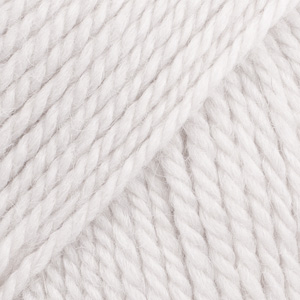





















































































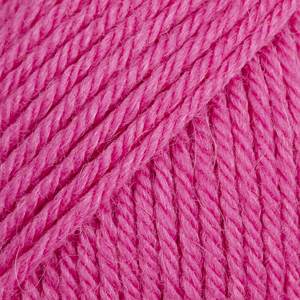



































































































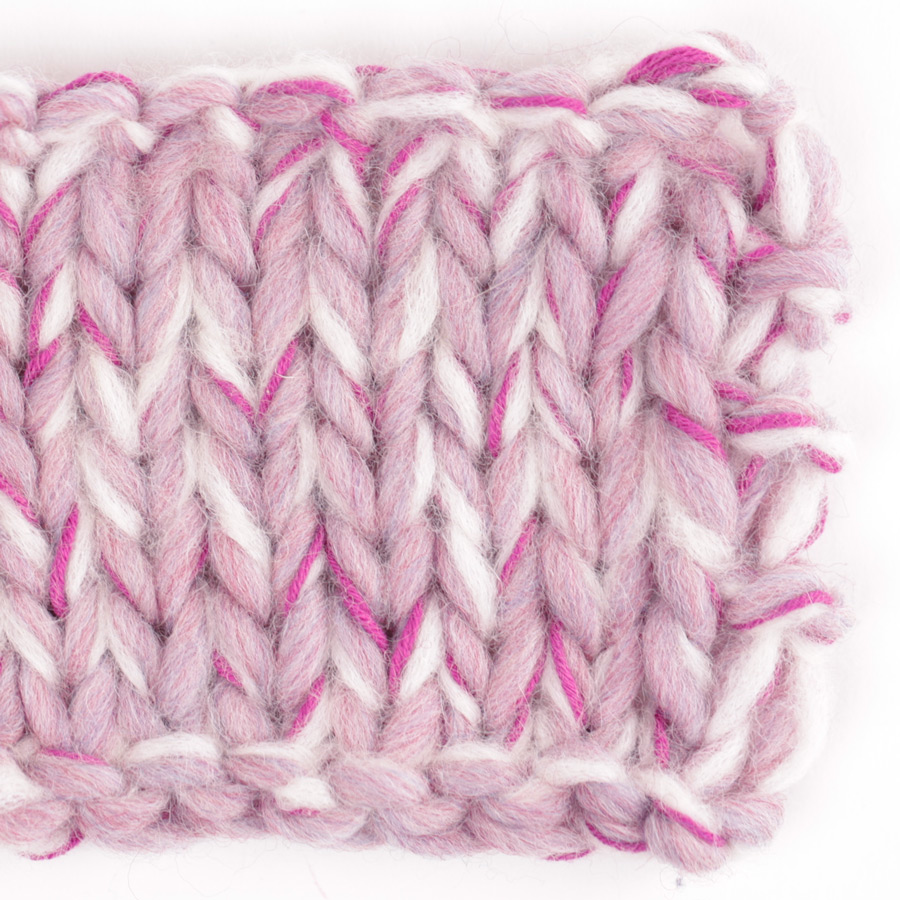



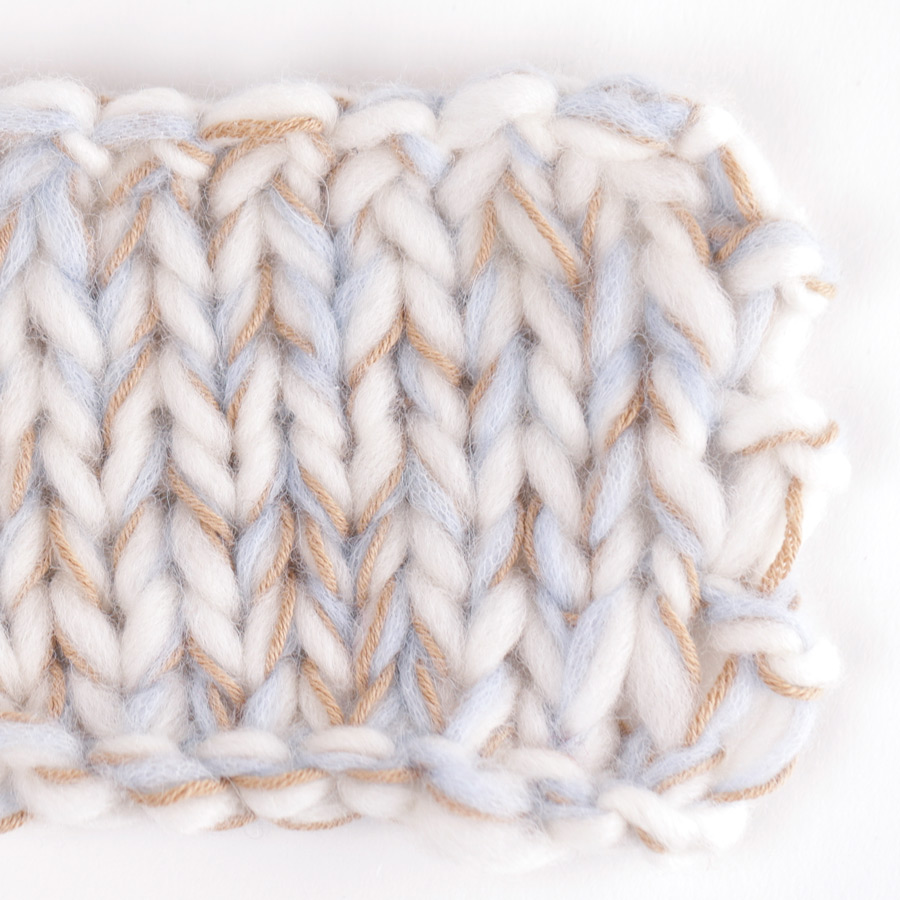
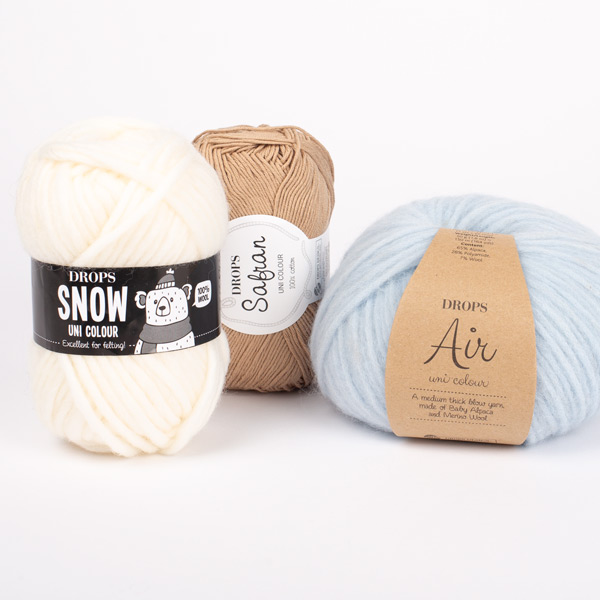
















Ame trabajar con este hilo … mis proyectos quedaron hermosos !!! Gracias
01.07.2022 - 02:08